Jerusalem Artichoke
Helianthus tuberosus
Sunflower Family
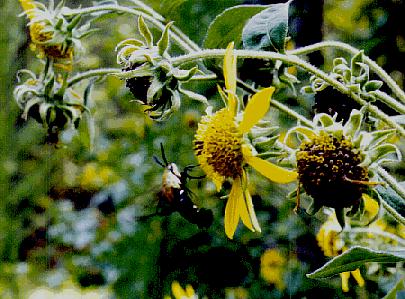
Rough branching stems bear large golden-yellow flower heads (to 3"). Also in this picture, a humingbird moth (Hemaris thysbe) feeds on the disks. This large sunflower was cultivated by the Indians and has spread eastward. In 1805 Lewis and Clark dined on the tubers prepared by the Indians, in what is now North Dakota.
![]()
Whole Tuber Jerusalem Artichoke Flour (JAF) is a concentrated source of Fructo-oligosaccharides and Insulinthat helps Bifidobacterium literally recolonize in the colon. This product contains over 6 million Bifidobacterium (3 species) per serving. With the body's natural flora balance restored, debilitating symptoms of candida disappear within days. JAF can be mixed with any juice orsprinkled over cereal. Contains no preservatives.
![]()
Artichoke, Jerusalem - James M. Stephens
The Jerusalem artichoke is a tuberous rooted perennial better adapted to the northern parts of the United States than to Florida. Various American Indians grew it for centuries as a staple food. They referred to it as girasole, while the French prefer to call it topinambour. The plant is also known as "sunchoke" since its small yellow flowers resembles those of its close relative, the sunflower. Do not confuse it with the globe artichoke of which the edible bud is a gourmet's delight.
Although the Jerusalem artichoke is not as well adapted to Florida as to other parts of the country, it is grown satisfactorily in gardens around the state. Planting stock is difficult to maintain through warm winters.
![]()
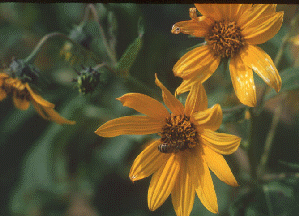
Jerusalem Artichoke, Helianthus tuberosus (HELTU) is closely related to sunflower and resembles it. The flower has fewer parts but is yellow. The roots have tubers which are high in inulin starch. The plant was investigated at one time as a source of alcohol. It becomes a formidable enemy in corn and soybean fields.
![]()
The edible tubers are elongated, knobby, white, red or purple skinned. Several tubers are clustered at the base of each stem. The plant is upright, tall-growing with bristly woody stems, green pointed leaves, and yellow sunflower-like flowers.
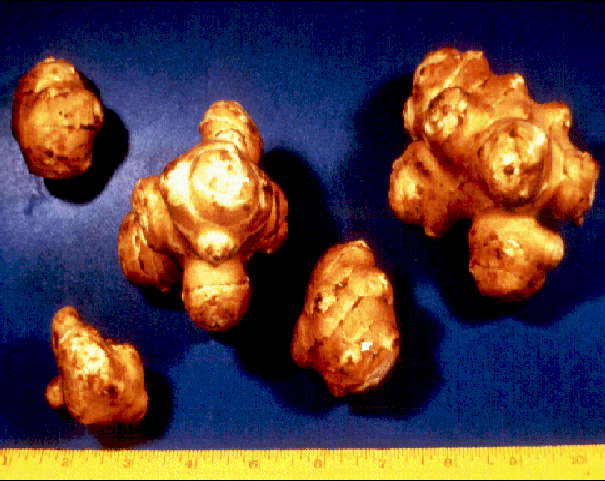
![]()
Jerusalem artichoke
The original tater-tots plant
Scientific Name: Helianthus tuberosus
![]()
seedling |
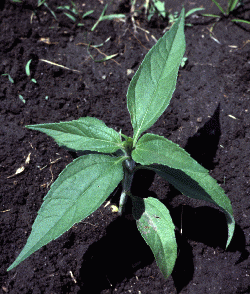 |
| juvenile plant | 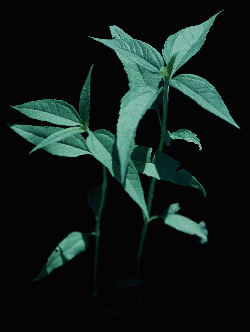 |
mature plants
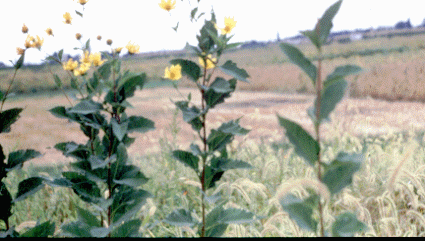
![]()
Helianthus tuberosus. JERUSALEM ARTICHOKES are a fairly well-known root crop that is occasionally cultivated. The plants are very vigorous, growing up to 10ft tall, and some people have been growing them successfully as part of a woodland garden, planting them on the sunnier side of the woodland. Slugs absolutely adore the young shoots in spring, so give the plants some protection at this time of the year. We find that a mulch of oak leafmould works well. The main drawback of this root is that over half of the carbohydrate it contains is in the form of inulin and this cannot be absorbed by the body. It does mean that you can eat quite a lot of it without putting on weight, but it does also mean that many people will find the inulin fermenting in their gut causing quite a bit of wind! The tubers can be eaten raw or cooked and the flavour improves if they are left in the ground until frosted.
![]()
![]()
Back to Plants
 Wildflower
Seed For Sale
Wildflower
Seed For Sale